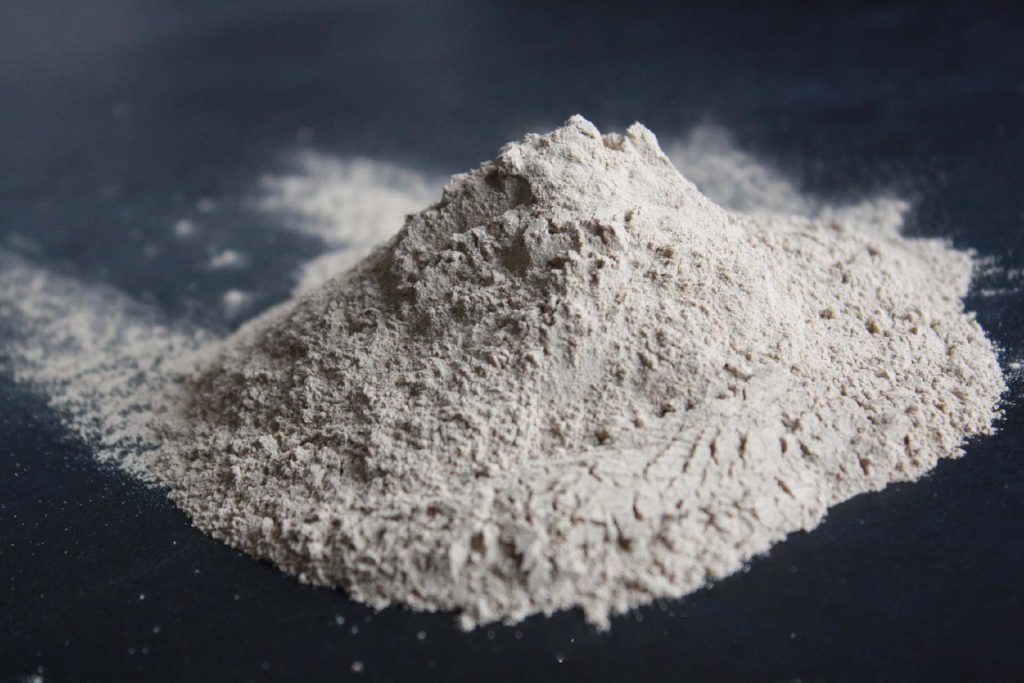The potential of montmorillonite in the field of new energy

Montmorillonite (MMT) is a layered silicate mineral. In its structure, the high-valence aluminum atoms in the aluminum-oxygen octahedra can be easily substituted by lower-valence atoms, resulting in a negative charge between the layers. To maintain the stability of the interlayer structure, montmorillonite adsorbs cations such as Na+, Ca2+, Mg2+, Al3+, and K+ from its surroundings. This characteristic gives montmorillonite strong adsorption and cation exchange capabilities. This unique structure and exchange capacity endow montmorillonite with significant potential for applications in the field of new energy technologies.
Lithium Battery Materials
(1) For Solid-State Electrolytes
Numerous studies have shown that montmorillonite (MMT), as a novel inorganic filler, can significantly improve the ionic conductivity and mechanical properties of solid polymer electrolytes (SPEs).
(2) Constructing Artificial SEI Layers
In artificial solid electrolyte interphase (SEI) films, layered montmorillonite-lithium (Li-MMT) imparts good mechanical properties to the SEI layer and provides Li+ transport channels, which helps suppress lithium dendrite growth. Benefiting from the fast Li+ channels in Li-MMT, a Li-LiFePO4 full cell assembled with a Li-MMT SEI layer exhibits superior rate performance, and maintains a high capacity retention of 90.6% after 400 cycles at 1C rate.
(3) Separator Optimization
MMT is used to optimize separators due to its excellent adsorption properties. Compared with commercial PE separators, the Li-MMT-modified separator has a higher Li+ concentration at the electrode/electrolyte interface, which reduces selective lithium deposition, weakens local current density, and suppresses dendrite growth.
(4) Optimizing Liquid Electrolytes
In lithium metal battery systems, compared to PEO electrolytes, montmorillonite exhibits stronger affinity with metallic lithium, with a zeta potential of +26 mV, which promotes the enrichment of lithium ions near the montmorillonite surface. With the adsorption and separation of lithium ions, the overpotential slightly increases to -57.7 mV, guiding lithium ions to migrate from montmorillonite and deposit on the copper current collector surface.
(5) Carrier Materials
Supercapacitors
Template Materials
Some natural minerals have specific morphologies, such as attapulgite, montmorillonite, halloysite, and diatomite, which are commonly used as templates to synthesize porous carbon materials with specific morphologies. Furthermore, conductive polymers with specific morphologies can be synthesized using the mineral template method. (2) Electrode Carrier Materials
To obtain active materials with specific morphologies, and simultaneously enhance the specific capacitance and improve the cycling stability, active materials can be loaded onto the surface of minerals such as montmorillonite and halloysite.
Methane Storage Materials
Currently, researchers are exploring the use of adsorption-based natural gas storage technology, which is economical, convenient, and safe, as an alternative to traditional compressed natural gas and liquefied natural gas technologies. Studies have shown that clay minerals play a positive role in the formation and development of shale gas reservoirs and possess gas storage capabilities.
Electrocatalytic Materials
Electrocatalysis is a type of catalysis that accelerates charge transfer reactions at the electrode/electrolyte interface, and has been widely used in fields such as electrochemical hydrogen evolution, oxygen evolution, and NOx reduction. Clay minerals such as montmorillonite have been widely used as carriers for photoelectrocatalytic electrode reaction components to prevent particle aggregation, improve the stability of sensitizer molecules, and enhance reaction selectivity.
Phase Change Thermal Energy Storage Materials
Phase change thermal energy storage materials (PCMs) are a new type of functional material that utilizes the heat absorption or release during phase change for thermal energy storage and release. Natural minerals play an important role in the field of phase change thermal energy storage. On one hand, natural minerals themselves are excellent inorganic phase change materials, and can be processed into high-performance phase change thermal energy storage materials after adding appropriate nucleating agents and thickeners. On the other hand, the porous structure of minerals can serve as an excellent carrier for phase change thermal energy storage materials.
